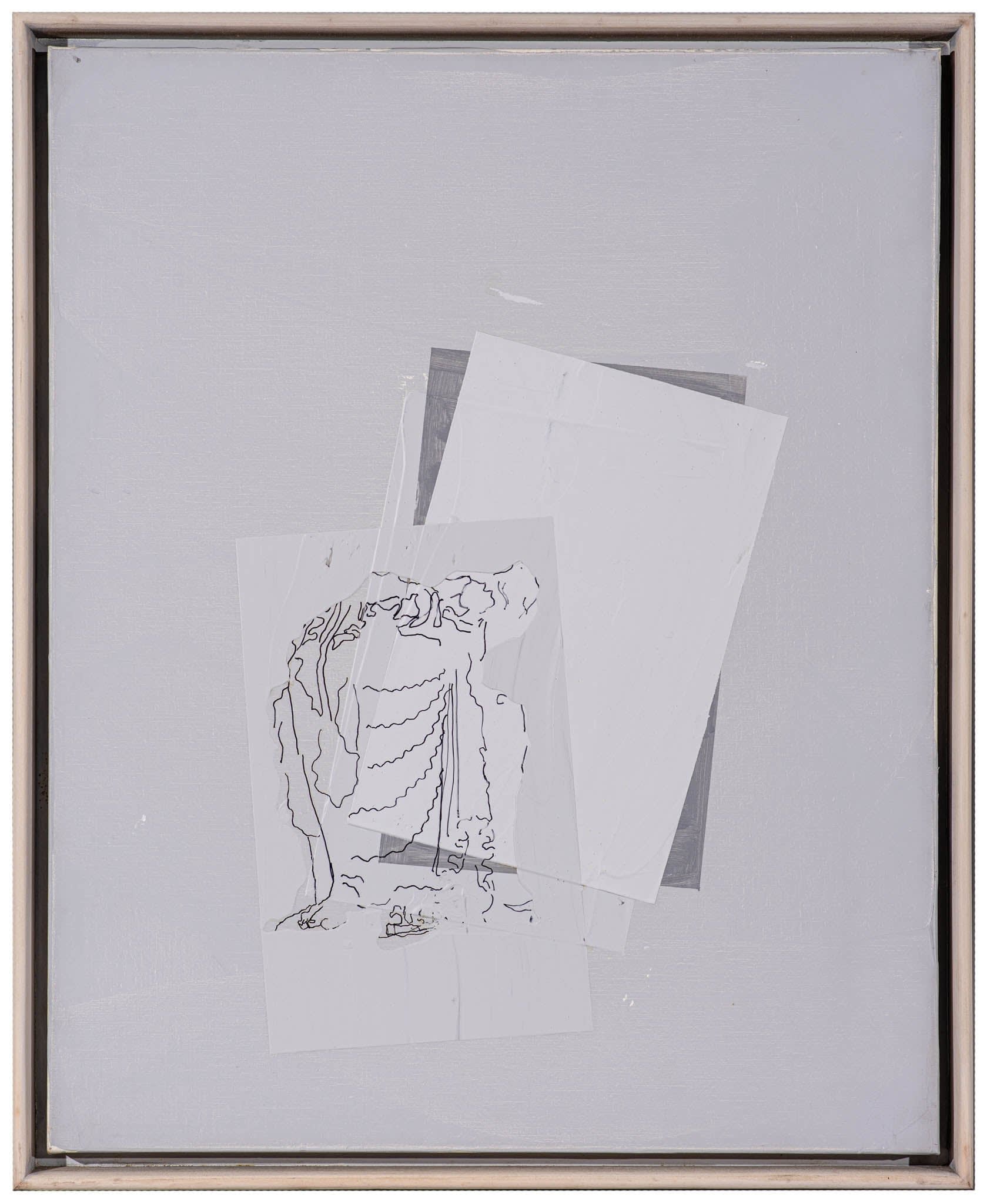
Judy Rifka - Wings and Columns (History of Sculpture), 1988. Photo by Bryan Thatcher.

Judy Rifka - Laborde Head II (History of Sculpture), 1987. Photo by Bryan Thatcher.

Judy Rifka - Fragment in Chiton (History of Sculpture), 1987. Photo by Bryan Thatcher.

Judy Rifka - Hestia in Stone (History of Sculpture), 1987. Photo by Bryan Thatcher.
In this series from the late 80's Judy Rifka enters a dialogue between the sculpture and the painting. The "History of Sculpture" - series presents us balanced, sharp-edged figures, which are not only pierced by circles, but they are also closed in neutral contrasts of black and gray tones.
The "Wings and Columns" work presents us an accumulation of repetitive shapes that alternately change their position and orientation. They are precisely executed, and through the overlapping an additional structure is created and is revealed under the respective color layer. Oversized forms are used as a background, which serves as a base layer for the small-format shapes that seem to dance on the surface. This is a perfect congruence of edged forms, perfect curves, repetitions, and a balance in their placement.
This perfect stacking reveals to us the incredible skill of the artist. But also, the colors disclose us a deliberate proximity to antiquity: gray colors analogous to the marble, but also the Greek columns drawn by Rifka: they answer our question about the ideological affiliation of painting to sculpture. And at the same time, a question arises: does this series want to calm down the ancient competition of arts, the so-called Paragons?
On a closer look, the almost three-dimensionality of the painting seems to be visible - this is Rifka's play with two-dimensionality, deception of the surface, play with light and shadow, fullness, and emptiness.
by Cezara-Maria Casian





